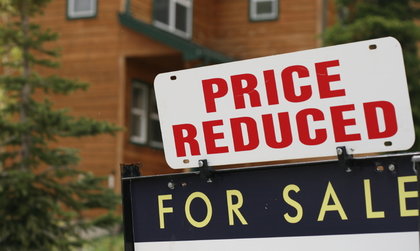
Price reductions, according to a new report from Trulia, could be growing more and more infrequent as the housing market recovers.
Heavy price reductions were one of the ugliest side effects of the housing downturn, but a new study by Trulia suggest that price reductions may be happening with fewer frequency as the housing market recovers.
According to Trulia’s study, which analyzed the prices of all non-foreclosure homes for sale on the website this month, 33.6 percent of the residences were priced lower than their original listing price, which is down from 36.7 percent in January 2012.
Post-Bubble Price Reductions – Fading Away?
As with most of these studies, the devil is ultimately in the details, and Trulia uncovered some monstrous variations across the nation’s local housing markets:
- Trulia compiled two separate lists – one featuring cities with the least price reductions and the other featuring cities with the most – and for the former list, California cities were well represented.
- Indeed, the Golden State took up seven of the 10 spots, with all the cities based in the South California/Bay Area region; Las Vegas, Miami and Fort Lauderdale were the other cities represented.
- By comparison, the cities with the most price reductions were concentrated in the Northeast and Midwest.
- And how did the price reduction scenario differ across those areas? Oakland, which came in at number one, has had only 15 percent of its properties’ prices reduces, whereas Springfield, Massachusetts saw price reductions for 48 percent of its properties.
What Creates a Price Reduction Haven?
In his analysis accompanying the study, Jed Kolko, Trulia’s chief economist, said that two factors explained the geographical difference in price reductions: price gains and lower vacancy rates. In the cities with the fewest price reductions, Kolko said, vacancy rates are generally lower, and with buyers competing with one another for the few remaining properties, sellers have less incentive to decrease their prices – and in some cases, are even increasing their prices.
Chicago, though, along with the Lake County/Kenosha County regions, were not among those areas – in fact, both were featured on Trulia’s second list, of areas with the ‘most’ price reductions so far this year. Lake County/Kenosha County, Trulia found, had the eighth most price reductions in the U.S., with 44 percent of its properties featuring lower prices than the original asking price, and Chicago was close behind in the number nine slot with 43 percent.
Chicago, though, is an awfully big area, and as Jack Persin, the managing broker of Ryan Hill Realty in Naperville, explained, not all housing markets in the Chicagoland area reflect such price reductions. For example, in Persin’s main community, Naperville, inventory levels have fallen substantially in the last year. In 2012, Persin said, there were 1,124 single-family homes for sale in Naperville, but now, there are just 538, a fall in housing inventory from 11.87 months to 5.36 months; meanwhile, listing price has increased 1.10 percent, and more significantly, median price has risen from $331,950 in 2012 to $438,500 today.
“That is a significant increase,” Persin said.
But what about your community? Are you within the parameters Trulia set, or does your community, like Persin’s defy the common perception? Let us know in the comments section!
